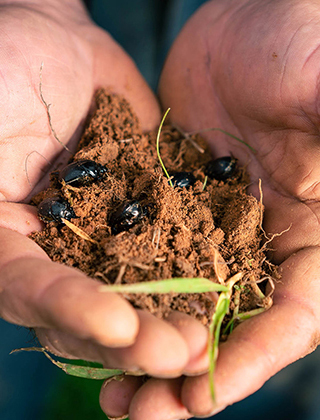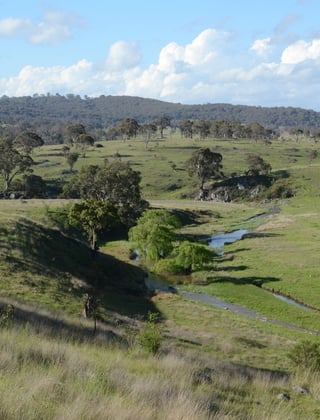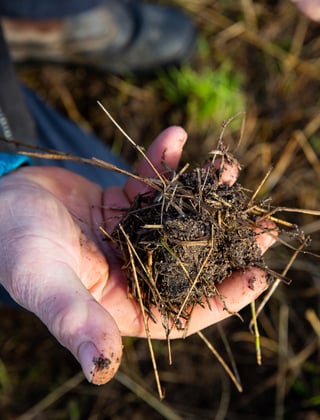Welcome to Australian Wool Innovation, a hub for the woolgrowers of Australia.
Not a woolgrower? Looking for information about wool products, wool care or wool processing?
The Woolmark Company is the global authority on wool. Visit Woolmark.com instead.
New tool tackles subterranean clover Red Leaf syndrome

Detailed guidance to help livestock producers manage the impacts of subterranean clover Red Leaf syndrome has been released, following recent outbreaks of the syndrome and associated pasture loss in Western Australia.
Australian Wool Innovation (AWI) in conjunction with Meat & Livestock Australia (MLA), the University of Western Australia (UWA) and the WA Department of Primary Industries and Regional Development (DPIRD) have developed a fact sheet based on new research prompted by outbreaks in 2017.
AWI Project Manager – Production Systems & Wool Credentials, Melissa McAulay, said that the effective collaboration between the research and development corporations and researchers was key to finding the cause of the syndrome and delivering answers and management strategies to producers.
“By convening an expert panel of agronomists, researchers and producers, we have been able to identify the main cause of the syndrome as Soybean Dwarf Virus (SbDV). The research revealed that of the subterranean clover plants tested, 80% with obvious red leaves were infected with SbDV, compared to just 2% without obvious symptoms.”
Given current understanding and testing of samples, researchers believe that SbDV is the most likely cause of the red leaf syndrome but it is likely a number of other contributing stress factors are involved.
SbDV is spread by aphids and frequently infects subterranean clover. Symptoms of the virus include reddening leaves, stunted plant growth and premature plant death which can lead to significant loss of dry matter and seed production.
Ms McAulay added that if producers suspect their clover pasture is infected with SbDV, they are encouraged to send symptomatic leaf samples to the DPIRD diagnostic laboratory service for accurate diagnosis.
“This also enables the project team to develop a better understanding of the virus and likely causes of the disease,” Ms McAulay said.
MLA Program Manager – Value Chain Research, Development & Adoption, Dr David Beatty, said the fact sheet provides producers with a clear plan of attack if they are impacted or suspect Red Leaf syndrome in their clover pasture.
“Subterranean clover is one of the most widely used annual pasture legumes in Western Australia, and it forms an important part of many livestock pasture profiles,” Dr Beatty said.
“We’re encouraging all producers to read this fact sheet, as it’s through a greater understanding of the symptoms, transmission and impacts of the virus that we’ll be better placed to identify, treat and manage the risks, protecting important clover pastures from infection.”
To combat the risk and spread of SbDV, producers are encouraged to use a variety of control measures within an integrated disease management plan, including:
- Use of insecticides only when the risk of early infection is high
- Implementation of annual ryegrass or forage oats into pasture regimes, as grasses do not host SbDV.
- Sow alternative legume species, such as Serradella, which do not appear to be affected by SbDV.
The fact sheet is available for download here.















